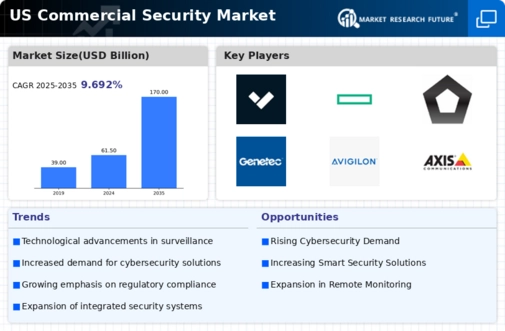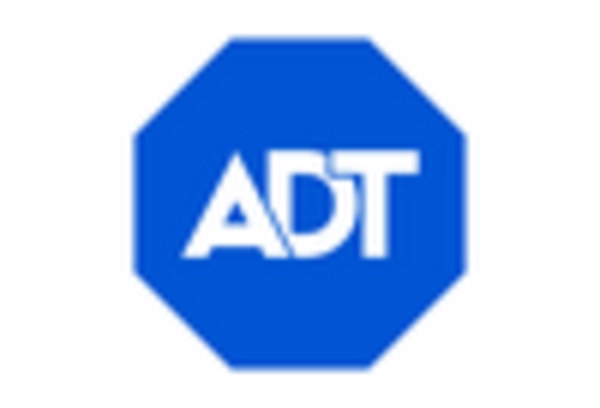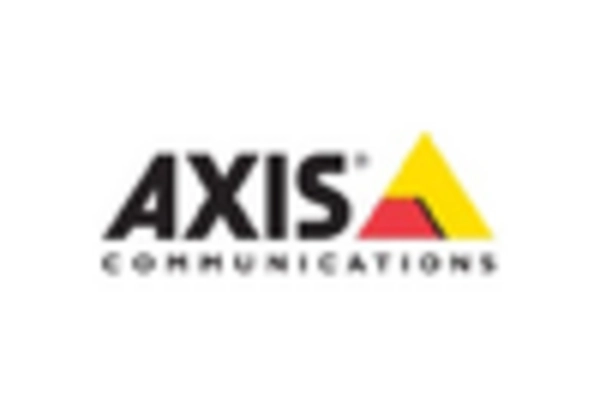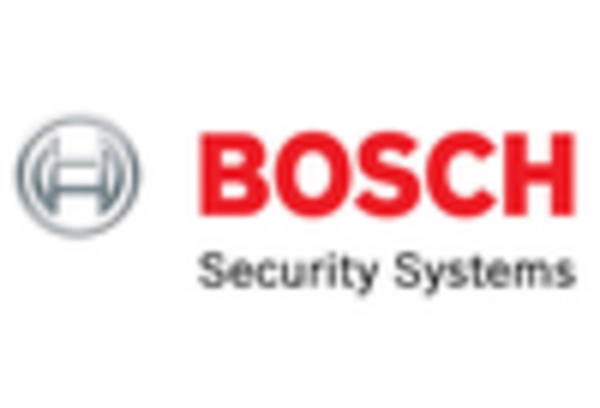Rising Crime Rates
The increasing incidence of crime across various sectors in the United States appears to be a primary driver for the commercial security market. As businesses face heightened risks, the demand for advanced security solutions is likely to surge. According to recent data, property crime rates have shown a notable increase, prompting organizations to invest in robust security measures. This trend indicates that companies are prioritizing the protection of their assets and personnel, thereby fueling growth in the commercial security market. Enhanced surveillance systems, access control technologies, and alarm systems are becoming essential components of security strategies. Consequently, the commercial security market is expected to expand as businesses seek to mitigate risks associated with theft, vandalism, and other criminal activities.
Technological Advancements
Technological innovations are transforming the landscape of the commercial security market. The integration of cutting-edge technologies such as video analytics, biometric systems, and IoT devices is reshaping how security is managed. These advancements not only enhance the effectiveness of security measures but also improve operational efficiency. For instance, the adoption of smart surveillance systems allows for real-time monitoring and rapid response to incidents. As organizations increasingly recognize the value of these technologies, investment in security solutions is projected to rise. The commercial security market is likely to benefit from this trend, as businesses seek to leverage technology to safeguard their operations and assets more effectively.
Regulatory Compliance Requirements
The evolving landscape of regulatory compliance is a significant driver for the commercial security market. Organizations are increasingly required to adhere to stringent regulations concerning data protection and privacy. Compliance with laws such as the GDPR and CCPA necessitates the implementation of robust security measures to protect sensitive information. As a result, businesses are investing in security solutions that not only meet regulatory standards but also enhance their overall security posture. This trend indicates a growing awareness of the importance of compliance in mitigating legal risks and protecting brand reputation. Consequently, the commercial security market is expected to experience growth as companies prioritize compliance-driven security investments.
Growth of E-commerce and Remote Work
The expansion of e-commerce and the rise of remote work arrangements are reshaping the commercial security market. As businesses increasingly operate online and employees work from various locations, the need for secure environments has intensified. Organizations are investing in security solutions that protect both physical and digital assets, ensuring that remote operations are safeguarded against potential threats. This shift is likely to drive demand for advanced security technologies, including cloud-based solutions and remote monitoring systems. The commercial security market is expected to grow as businesses adapt to these new operational realities, prioritizing security measures that align with their evolving needs.
Increased Awareness of Cybersecurity Threats
The rise in cybersecurity threats has heightened awareness among businesses regarding the importance of comprehensive security solutions. As cyberattacks become more sophisticated, organizations are recognizing that physical security measures alone are insufficient. This realization is driving demand for integrated security systems that encompass both physical and cybersecurity. The commercial security market is likely to see increased investment in solutions that address these dual threats. Companies are seeking to protect their digital assets alongside their physical premises, leading to a more holistic approach to security. This trend suggests that the commercial security market will continue to evolve as businesses adapt to the changing threat landscape.
















Leave a Comment